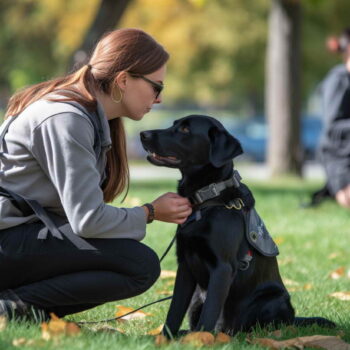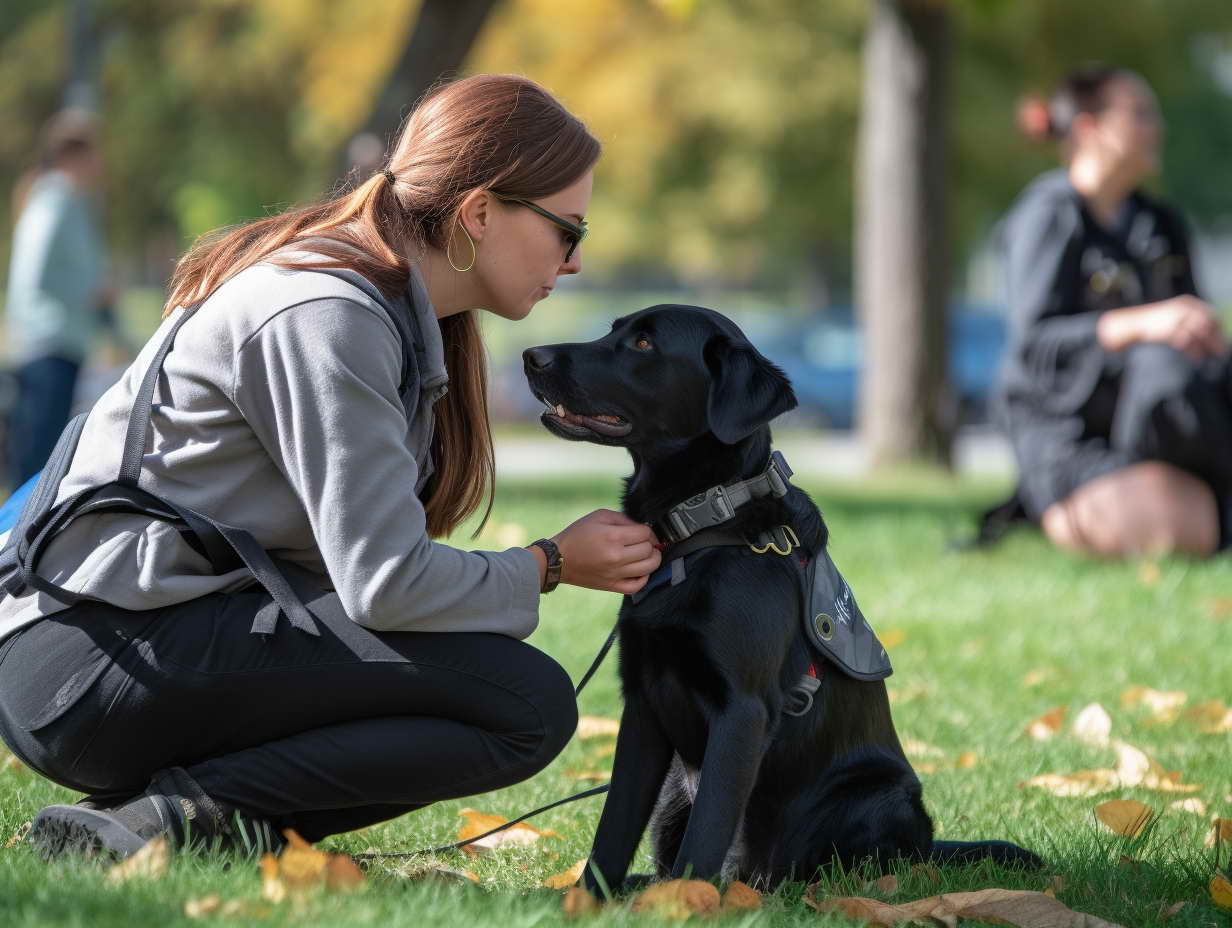Unveiling the Complete Guide to Service Dog Training Class Costs
Service dogs provide invaluable assistance and companionship to individuals with various disabilities. From aiding in mobility to offering emotional support, these specially trained dogs play an essential role in enhancing the quality of life for their owners. However, embarking on the journey of training a service dog requires careful consideration of costs, commitment, and dedication. In this comprehensive guide, we’ll delve into the world of Service Dog Training Class Costs, offering a detailed breakdown of expenses, essential insights, and answers to frequently asked questions.
Introduction: Exploring the Importance of Service Dog Training
Service dogs are not just pets; they are highly trained companions that provide essential support to individuals with disabilities. These dogs undergo rigorous training to perform specific tasks that cater to their owners’ unique needs. The journey of turning a dog into a skilled service companion starts with proper training, which comes with associated costs. Let’s dive into the world of service dog training class costs to better understand this investment.
Understanding Service Dogs: The Role and Benefits
Service dogs are trained to assist individuals with disabilities in various ways. They can perform tasks such as guiding the visually impaired, alerting individuals with hearing impairments, retrieving items, providing stability to those with mobility challenges, and offering emotional support to individuals with mental health conditions. These trained companions significantly enhance their owners’ independence, safety, and overall well-being, making the training investment worthwhile.
Factors Influencing Costs: Breaking Down the Cost Components
The cost of training a service dog can vary widely based on several factors. These include the type of disability the dog is being trained to assist with, the complexity of tasks required, the dog’s breed and age, the training program’s reputation, and the geographic location. Understanding these factors can help you anticipate and plan for the expenses involved in service dog training.
Professional Training Programs: Investing in Expertise
Professional service dog training programs provide structured curricula and expert guidance to ensure that dogs are trained to perform their tasks effectively. These programs often offer comprehensive training that covers obedience, task-specific skills, socialization, and public behavior. The expertise and experience offered by these programs justify their costs, as they lead to well-trained service dogs that can seamlessly integrate into their owner’s life.
Training Class Options: Different Types of Training Classes
When it comes to service dog training classes, you’ll encounter various options, including basic obedience classes, task-specific training, and public behavior training. Each type of class serves a specific purpose in the overall training journey. Basic obedience classes lay the foundation for good behavior and manners, while task-specific training focuses on teaching the dog specialized skills tailored to the owner’s needs.
One-on-One vs. Group Classes: Pros and Cons
Deciding between one-on-one training and group classes depends on your dog’s individual needs and preferences. One-on-one training offers personalized attention and can address specific challenges your dog may face. On the other hand, group classes provide opportunities for socialization and distractions that mimic real-world situations. Considering your dog’s personality and learning style can help you make an informed choice.
Training Duration: Time Investment for Desired Results
Service dog training is not a quick process—it requires time, consistency, and patience. The duration of training can vary based on factors such as the dog’s age, breed, and complexity of tasks. On average, it takes about 6 months to 2 years to fully train a service dog. Remember that the investment of time is essential for achieving the desired results.
Training Techniques: Modern Approaches to Training
Modern service dog training techniques focus on positive reinforcement, using rewards to encourage desired behaviors. These techniques create a positive and trusting relationship between the dog and the handler. Avoiding punitive methods ensures that the training process is enjoyable for both the dog and the owner.
Evaluating Training Facilities: Choosing the Right Environment
Selecting the right training facility is crucial for effective service dog training. When evaluating potential training centers, consider factors such as the trainers’ qualifications, training methods, facility cleanliness, and the overall environment. A well-equipped and positive training facility can significantly impact your dog’s learning experience.
Additional Training Expenses: Beyond the Basics
In addition to the cost of classes, there are other expenses to consider when budgeting for service dog training. These may include the cost of training equipment, such as harnesses and vests, as well as treats and rewards used during training sessions. Regular veterinary check-ups, grooming, and health maintenance are also important aspects of your dog’s overall well-being.
Financial Assistance: Support for Training Costs
It’s important to note that there are organizations and programs that offer financial assistance to individuals who require a service dog but may not have the means to cover the full training costs. These organizations can help alleviate the financial burden and make service dog training more accessible to those in need.
DIY Training vs. Professional Help: Weighing the Options
While some individuals opt for do-it-yourself (DIY) training, it’s important to recognize that training a service dog requires specialized knowledge and skills. Professional training programs offer structured curricula, experienced trainers, and a supportive community. Investment in professional help often leads to more successful outcomes.
Service Dog Certification: Navigating the Certification Process
Certifying a service dog involves a process that varies based on your location. In some cases, certification may not be required, while in others, it may provide legal benefits and access to certain public spaces. Research the certification process in your area and consult with professionals to ensure compliance with relevant regulations.

Service Dog Maintenance: Ongoing Costs
After completing the initial training, service dog owners should anticipate ongoing maintenance costs. These include expenses related to food, medical care, grooming, and other essentials. Regular training reinforcement is also recommended to ensure that the dog maintains its skills and behaviors.
Tax Deductions: Potential Financial Benefits
In some regions, individuals with disabilities may be eligible for tax deductions related to service dog training and maintenance expenses. It’s advisable to consult with a tax professional to understand the potential financial benefits and deductions available to you.
Real-life Experiences: Insights from Service Dog Owners
To provide you with a comprehensive understanding of service dog training class costs, we’ve gathered insights from individuals who have gone through the process. Many service dog owners attest to the transformative impact these companions have on their lives, making the investment in training well worth it.
FAQs
Can I train a service dog on my own?
Absolutely! However, professional training programs offer expertise and structured curricula that can lead to better outcomes.
How much do service dog training classes cost on average?
Service dog training class costs can vary from $500 to $2,500 or more, depending on the program and location.
Are there financial aid options available for service dog training?
Yes, there are organizations that provide financial assistance to individuals in need of service dogs.
Can any dog breed become a service dog?
While any breed has the potential, certain breeds are more commonly trained due to their temperament and characteristics.
What tasks can a service dog be trained to perform?
Service dogs can be trained to perform tasks such as retrieving items, alerting to medical conditions, providing stability, and more.
How long does it take to train a service dog?
The training duration can vary widely, typically taking 6 months to 2 years to fully train a service dog.
Conclusion: Investing in a Brighter Future
Investing in service dog training class costs is an investment in a brighter future for both individuals with disabilities and their loyal companions. The benefits of a well-trained service dog are immeasurable, ranging from increased independence to enhanced emotional well-being. By understanding the factors that influence costs and the various training options available, you can make an informed decision that leads to a successful partnership with your service dog.


Leave a Reply